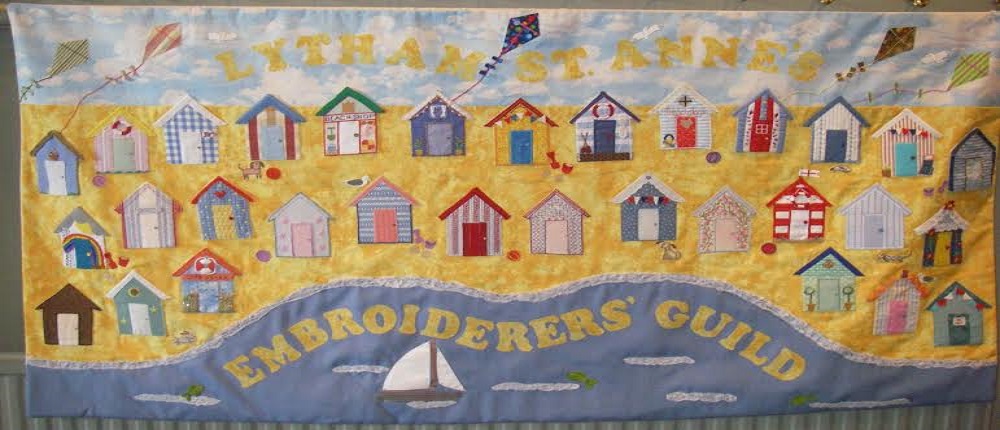She gave a very interesting talk and slide show about her experiences at the Batik Institute in Central Java, Indonesia. It was all the more 'exciting' as all the lights were off apart from that of the projector - so I will not be writing too much technical detail in this post due to not being able to decipher the unfamiliar names. Writing in the dark is not the easiest task :-)
This wonderful 3 winged creature, below, is a creation of Tori's. I just loved it and was delighted to be able to purchase a postcard of him.
Here are more of Tori's designs on a pink background. Traditionally the dye is either Brown; made from a tree or Blue (Indigo) made from a leaf.
This is a bamboo Tjanting - pronounced Canting. The word Batik means Dot and is a form of decoration that uses wax to produce a pattern before dyeing the fabric. The wax acts as a resist that prevents the dye from colouring the fabric and so leaving you with your design.
Two more of Tori's Batik designs, below. I like the two birds in the corner of the smaller square.
Here is the close up of the larger batik piece, in yellow and blue underneath.
The Sultan on the Island would dictate the patterns that the women were allowed to create. The patterns would signify rank among the courtiers.
Coastal settlements had more freedom as the patterns were influenced by trade from the visiting ships. The bird pattern called Gurdu was popular as was the criss cross called Blade.
Another yellow and blue design, below, this time more intricate.
There are two methods of Batik - using a Stamp called a Cap ( pronounced chap) or Tulis, which is hand painted.
Hand painting can be with a Tjanting, as we saw above, or a stick called a Rotan or with a brush as you would paint with. The wax works like gutta.
Wax is melted in cooking pots and can be a True Wax called Gonderluem or micro wax, paraffin wax which are chemical waxes or natural wax from bees, coconuts or animals or a wax that has been used previously.
Here is a lovely piece of Batik below that has green parts to the design, which of course we know is made by mixing blue and yellow dye. This is where it all a bit of forethought is needed to decided which parts of the first dye to cover before adding the second.
Fabric used for Batik have different grades.
Primissima - a heavy cotton.
Prim - silk, satin or wool.
Biru - a very soft silk.
There are also different processes - such as the Lordan Process which has 8 stages with a different name for each; and the Bodesan Process.
Here are some more examples from the Island of Java that are in Tori's collection.
Exotic flowers above and the more modern looking sunshine pattern below, that we often see on sarongs and skirts in holiday resorts. What did I do with mine? I had the exact same one!
What do you think of this man/beast/snake? below....
A big thank you to Tori for bringing in her collection and educating us on the various techniques and processes of this gorgeous textile art.










No comments:
Post a Comment